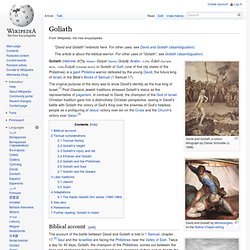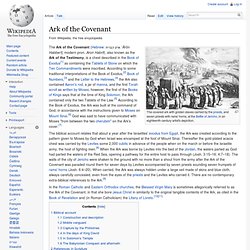

The Bible and Flying Saucers. Ezekiel 1 "Now it came to pass in the thirtieth year, in..." KJV. Apocrypha. Enoch. Book of Tobit. The Book of Tobit (Book of Tobias in the Vulgate; from the Greek: τωβιθ, and Hebrew: טובי Tobi "my good", also called the Book of Tobias from the Hebrew טוביה Tovya "God is good") is a book of scripture that is part of the Catholic and Orthodox biblical canon, pronounced canonical by the Council of Carthage of 397 and confirmed for Roman Catholics by the Council of Trent (1546). Dead Sea Scrolls. Nephilim. Etymology[edit] In the Hebrew Bible[edit] The term "Nephilim" occurs just twice in the Hebrew Bible, both in the Torah.

The first is Genesis 6:1–4, immediately before the story of Noah's ark. The second is Numbers 13:32–33, where ten of the Twelve Spies report that they have seen fearsome giants in Canaan. The nature of the nephilim is complicated by the ambiguity of Genesis 6:4, which leaves it unclear whether they are the "sons of God" or their offspring who are the "mighty men of old, men of renown". Interpretations[edit] There are effectively two views[15] regarding the identity of the nephilim, which follow on from alternative views about the identity of the sons of God (Bənê hāʼĕlōhîm): Fallen angels[edit] Main article: Fallen angel Some Christian commentators have argued against this view,[21][22] citing Jesus's statement that angels do not marry.[23] Others believe that Jesus was only referring to angels in heaven.[24]
Goliath. David and Goliath, a colour lithograph by Osmar Schindler (c. 1888) The original purpose of the story was to show David's identity as the true king of Israel.[1] Post-Classical Jewish traditions stressed Goliath's status as the representative of paganism, in contrast to David, the champion of the God of Israel.

Christian tradition gave him a distinctively Christian perspective, seeing in David's battle with Goliath the victory of God's King over the enemies of God's helpless people as a prefiguring of Jesus' victory over sin on the Cross and the Church's victory over Satan.[2] Biblical account[edit] David hoists the severed head of Goliath as illustrated by Gustave Doré (1866). David and Goliath confront each other, Goliath with his armor and shield, David with his staff and sling. David hurls a stone from his sling with all his might and hits Goliath in the center of his forehead, Goliath falls on his face to the ground, and David cuts off his head. Textual considerations[edit] Ark of the Covenant.
The Ark of the Covenant (Hebrew: אָרוֹן הַבְּרִית ʾĀrôn Habbərît, modern pron.

Aron Habrit), also known as the Ark of the Testimony, is a chest described in the Book of Exodus[1] as containing the Tablets of Stone on which the Ten Commandments were inscribed. According to some traditional interpretations of the Book of Exodus,[2] Book of Numbers,[3] and the Letter to the Hebrews,[4] the Ark also contained Aaron's rod, a jar of manna, and the first Torah scroll as written by Moses; however, the first of the Books of Kings says that at the time of King Solomon, the Ark contained only the two Tablets of the Law.[5] According to the Book of Exodus, the Ark was built at the command of God, in accordance with the instructions given to Moses on Mount Sinai.[6] God was said to have communicated with Moses "from between the two cherubim" on the Ark's cover.[7] Biblical account[edit] Construction and description[edit] Battle of Jericho. The Battle of Jericho is a battle in the biblical Book of Joshua, (Joshua 6:1-27) the first battle of the Israelites during their conquest of Canaan.

According to the narrative, the walls of Jericho fell after Joshua's Israelite army marched around the city blowing their trumpets. Biblical account[edit] Spying on Jericho[edit] Before crossing into the land west of the River Jordan, Joshua sent two spies to look over the land. The king of Jericho heard that two Israelite spies were within his city and ordered them to be brought out to him. Zohar: annotated & explained. The Manna Machine. The manna machine. Mannapic1.jpg (JPEG Image, 354x559 pixels) Urim and Thummim.